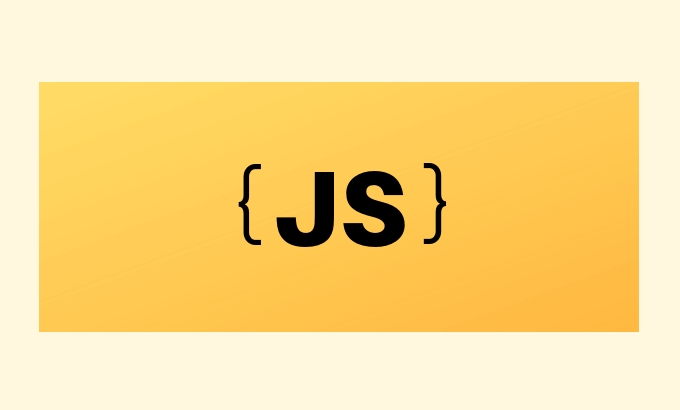What is a JavaScript IIFE (Immediately Invoked Function Expression)?
Aug 01, 2025 am 06:04 AMA IIFE (call function expression immediately) is a JavaScript function executed immediately after definition. It is mainly used to create private scopes, avoid global pollution, and execute code immediately. 1. It is implemented by wrapping the function in parentheses and adding call brackets immediately afterwards: (function() { / code / })(); 2. Use IIFE to prevent variables from leaking to the global scope, such as (function() { var localVar = "private"; })(); Ensure that localVar cannot be accessed from externally; 3. You can create private variables in combination with closures, such as counter object exposes interfaces through return methods but hides privateCount; 4. It was used to safely bind global objects or lock undefined values to prevent rewrites; 5. It is the basis of the module pattern before the ES6 module appears, and supports the separation of public APIs from private implementations; 6. Common variants include IIFE with parameters, IIFE with return values and arrow function forms; 7. Modern alternatives include ES6 modules, let/const block-level scopes, and top-level await, but IIFE is still suitable for fast scripting, UMD mode and teaching scenarios. Therefore, IIFE is a simple and powerful model, especially in older JavaScript to effectively manage scope and encapsulation.

An IIFE (Immediately Invoked Function Expression) is a JavaScript function that runs as soon as it's defined. It's a design pattern commonly used to create a private scope, avoid polluting the global namespace, and execute code immediately without needing to call the function separately.

How an IIFE Works
An IIFE is created by wrapping a function in parentstheses () and then immediately calling it with another set of parentstheses () .
Here's the basic syntax:

(function() {
// code to be executed
})();Or with arrow functions (though less common for IIFEs):
(() => {
// code to be executed
})(); The outer parentses turn the function into an expression (not a function declaration), and the trailing () executes it right away.

Why Use an IIFE?
1. Avoid Global Scope Pollution
Before ES6 and the widespread use of let and const , JavaScript only had function-level scope. IIFEs were used to encapsulate variables so they wouldn't leak into the global scope.
(function() {
var localVar = "I'm private";
console.log(localVar); // "I'm private"
})();
// console.log(localVar); // ReferenceError: localVar is not defined This keeps localVar safe from the outside world.
2. Create Private Variables and Closures
You can use IIFEs to create closings with private data:
var counter = (function() {
var privateCount = 0;
return {
increment: function() {
privateCount ;
},
getValue: function() {
return privateCount;
}
};
})();
counter.increment();
console.log(counter.getValue()); // 1
// privateCount is not accessible directly3. Safe Use of Modern JavaScript in Older Environments
IIFEs were often used in libraries to safely bind the global object ( window , global , etc.) or to lock in values like undefined :
(function(window, undefined) {
// Safely use `window` and ensure `undefined` is truly undefined
})(window); This was helpful in older codebases where undefined could be redefined (yes, really!).
4. Module Pattern Foundation
IIFEs were the backbone of the module pattern before ES6 modules became standard. They allowed developers to expose a public API while keeping internals private.
Common Syntax Variants
These are all valid IIFE forms:
// Classic IIFE
(function() {
console.log("Hello!");
})();
// With arrow function (ES6)
(() => {
console.log("Hello from arrow!");
})();
// IIFE with parameters
(function(name) {
console.log("Hello, " name);
})("John");
// IIFE returning a value
var result = (function() {
return 42;
})();?? Note: The parentsthes around the function are required — without them, JavaScript interprets it as a function declaration, and you can't immediately invoke a declaration.
Modern Alternatives
With the rise of:
- ES6 modules (
import/export) - Block-scoped variables (
let,const) - Top-level await in modules
…pure IIFEs are used less often today. But they still come in handy for:
- Quick scripts
- UMD patterns
- Legacy code
- Demonstrating closure and scope concepts
Basically, an IIFE is a self-running function that helps contain scope — simple in concept, but powerful in practice, especially in older JavaScript environments.
The above is the detailed content of What is a JavaScript IIFE (Immediately Invoked Function Expression)?. For more information, please follow other related articles on the PHP Chinese website!

Hot AI Tools

Undress AI Tool
Undress images for free

Undresser.AI Undress
AI-powered app for creating realistic nude photos

AI Clothes Remover
Online AI tool for removing clothes from photos.

Clothoff.io
AI clothes remover

Video Face Swap
Swap faces in any video effortlessly with our completely free AI face swap tool!

Hot Article

Hot Tools

Notepad++7.3.1
Easy-to-use and free code editor

SublimeText3 Chinese version
Chinese version, very easy to use

Zend Studio 13.0.1
Powerful PHP integrated development environment

Dreamweaver CS6
Visual web development tools

SublimeText3 Mac version
God-level code editing software (SublimeText3)

Hot Topics
 How does garbage collection work in JavaScript?
Jul 04, 2025 am 12:42 AM
How does garbage collection work in JavaScript?
Jul 04, 2025 am 12:42 AM
JavaScript's garbage collection mechanism automatically manages memory through a tag-clearing algorithm to reduce the risk of memory leakage. The engine traverses and marks the active object from the root object, and unmarked is treated as garbage and cleared. For example, when the object is no longer referenced (such as setting the variable to null), it will be released in the next round of recycling. Common causes of memory leaks include: ① Uncleared timers or event listeners; ② References to external variables in closures; ③ Global variables continue to hold a large amount of data. The V8 engine optimizes recycling efficiency through strategies such as generational recycling, incremental marking, parallel/concurrent recycling, and reduces the main thread blocking time. During development, unnecessary global references should be avoided and object associations should be promptly decorated to improve performance and stability.
 How to make an HTTP request in Node.js?
Jul 13, 2025 am 02:18 AM
How to make an HTTP request in Node.js?
Jul 13, 2025 am 02:18 AM
There are three common ways to initiate HTTP requests in Node.js: use built-in modules, axios, and node-fetch. 1. Use the built-in http/https module without dependencies, which is suitable for basic scenarios, but requires manual processing of data stitching and error monitoring, such as using https.get() to obtain data or send POST requests through .write(); 2.axios is a third-party library based on Promise. It has concise syntax and powerful functions, supports async/await, automatic JSON conversion, interceptor, etc. It is recommended to simplify asynchronous request operations; 3.node-fetch provides a style similar to browser fetch, based on Promise and simple syntax
 JavaScript Data Types: Primitive vs Reference
Jul 13, 2025 am 02:43 AM
JavaScript Data Types: Primitive vs Reference
Jul 13, 2025 am 02:43 AM
JavaScript data types are divided into primitive types and reference types. Primitive types include string, number, boolean, null, undefined, and symbol. The values are immutable and copies are copied when assigning values, so they do not affect each other; reference types such as objects, arrays and functions store memory addresses, and variables pointing to the same object will affect each other. Typeof and instanceof can be used to determine types, but pay attention to the historical issues of typeofnull. Understanding these two types of differences can help write more stable and reliable code.
 JavaScript time object, someone builds an eactexe, faster website on Google Chrome, etc.
Jul 08, 2025 pm 02:27 PM
JavaScript time object, someone builds an eactexe, faster website on Google Chrome, etc.
Jul 08, 2025 pm 02:27 PM
Hello, JavaScript developers! Welcome to this week's JavaScript news! This week we will focus on: Oracle's trademark dispute with Deno, new JavaScript time objects are supported by browsers, Google Chrome updates, and some powerful developer tools. Let's get started! Oracle's trademark dispute with Deno Oracle's attempt to register a "JavaScript" trademark has caused controversy. Ryan Dahl, the creator of Node.js and Deno, has filed a petition to cancel the trademark, and he believes that JavaScript is an open standard and should not be used by Oracle
 React vs Angular vs Vue: which js framework is best?
Jul 05, 2025 am 02:24 AM
React vs Angular vs Vue: which js framework is best?
Jul 05, 2025 am 02:24 AM
Which JavaScript framework is the best choice? The answer is to choose the most suitable one according to your needs. 1.React is flexible and free, suitable for medium and large projects that require high customization and team architecture capabilities; 2. Angular provides complete solutions, suitable for enterprise-level applications and long-term maintenance; 3. Vue is easy to use, suitable for small and medium-sized projects or rapid development. In addition, whether there is an existing technology stack, team size, project life cycle and whether SSR is needed are also important factors in choosing a framework. In short, there is no absolutely the best framework, the best choice is the one that suits your needs.
 Understanding Immediately Invoked Function Expressions (IIFE) in JavaScript
Jul 04, 2025 am 02:42 AM
Understanding Immediately Invoked Function Expressions (IIFE) in JavaScript
Jul 04, 2025 am 02:42 AM
IIFE (ImmediatelyInvokedFunctionExpression) is a function expression executed immediately after definition, used to isolate variables and avoid contaminating global scope. It is called by wrapping the function in parentheses to make it an expression and a pair of brackets immediately followed by it, such as (function(){/code/})();. Its core uses include: 1. Avoid variable conflicts and prevent duplication of naming between multiple scripts; 2. Create a private scope to make the internal variables invisible; 3. Modular code to facilitate initialization without exposing too many variables. Common writing methods include versions passed with parameters and versions of ES6 arrow function, but note that expressions and ties must be used.
 Handling Promises: Chaining, Error Handling, and Promise Combinators in JavaScript
Jul 08, 2025 am 02:40 AM
Handling Promises: Chaining, Error Handling, and Promise Combinators in JavaScript
Jul 08, 2025 am 02:40 AM
Promise is the core mechanism for handling asynchronous operations in JavaScript. Understanding chain calls, error handling and combiners is the key to mastering their applications. 1. The chain call returns a new Promise through .then() to realize asynchronous process concatenation. Each .then() receives the previous result and can return a value or a Promise; 2. Error handling should use .catch() to catch exceptions to avoid silent failures, and can return the default value in catch to continue the process; 3. Combinators such as Promise.all() (successfully successful only after all success), Promise.race() (the first completion is returned) and Promise.allSettled() (waiting for all completions)
 What is the cache API and how is it used with Service Workers?
Jul 08, 2025 am 02:43 AM
What is the cache API and how is it used with Service Workers?
Jul 08, 2025 am 02:43 AM
CacheAPI is a tool provided by the browser to cache network requests, which is often used in conjunction with ServiceWorker to improve website performance and offline experience. 1. It allows developers to manually store resources such as scripts, style sheets, pictures, etc.; 2. It can match cache responses according to requests; 3. It supports deleting specific caches or clearing the entire cache; 4. It can implement cache priority or network priority strategies through ServiceWorker listening to fetch events; 5. It is often used for offline support, speed up repeated access speed, preloading key resources and background update content; 6. When using it, you need to pay attention to cache version control, storage restrictions and the difference from HTTP caching mechanism.






